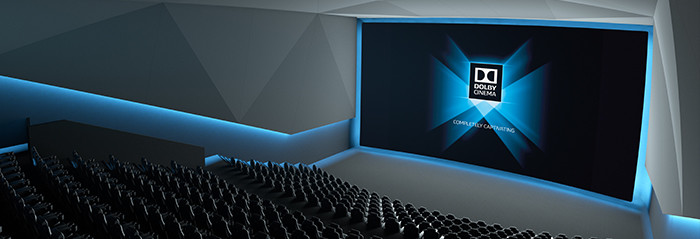M+E Connections

Dolby CEO: An ‘Exciting’ Time for the Company
Story Highlights
By Chris Tribbey
The end of 2015 was a banner quarter for Dolby, according to CEO Kevin Yeaman.
Speaking Jan. 27 during the sound technology company’s fiscal first quarter financial call, Yeaman noted all the gains Dolby has made, from its high-dynamic range (HDR) technology Dolby Vision, to the object-based sound technology Dolby Atmos, to the company’s Dolby Cinema technology.
“It was an exciting quarter for Dolby,” he said. “Dolby technologies were our great display at CES and we have new partner announcements for each of our three new offering: Dolby Voice, Dolby Vision and Dolby Cinema.”
Dolby Atmos is available or coming to a combined 1,600 theater screens (with nearly 400 Dolby Atmos theatrical titles announced or released), and more than 60 home entertainment hardware products have committed to including the technology. Both Warner Bros. and Sony have announced Dolby Atmos Blu-ray Disc titles, and Walmart’s streaming service Vudu is already offering titles with the format (with Comcast X1 next in line).
For Dolby Vision, both LG, Roku (reference design) and TCL have announced that their 2016 TVs will support the HDR technology, joining Vizio, and MGM, Universal, Warner and Sony have all agreed to support Dolby Vision in their home entertainment releases. Netflix is creating original content with Dolby Vision, and Vudu is streaming content with the technology.
And for Dolby Cinema, the Wanda Cinema line of theaters in Asia has announced it will open 100 Dolby Cinema locations in China (currently there are 16 open worldwide). AMC has committed to opening 50 Dolby Cinema screens this year. Star Wars: The Force Awakens premiered in Dolby Vision and Dolby Atmos, with other Dolby Vision theatrical titles including The Revenant, The Martian and Inside Out.
“During the quarter, we continue to strengthen our leadership position in audio entertainment, and we added major new partners across all three of our new offerings with LG in Dolby Vision, Wanda in Dolby Cinema, and PGi in Dolby Voice,” Yeaman said. “This creates opportunities for revenue growth and it broadens the number of people that will enjoy Dolby branded audiovisual experiences.”
For the first fiscal quarter of 2016 Dolby reported revenue of $241 million, up from $234 million the previous year, with a profit of $31 million, down from $41 million.
Eric Wold, analyst with B. Riley & Co., said that while Dolby’s fiscal results were lower than expected, the company’s consumer-driven licensing revenues for Vision, Voice and Cinema will help drive a successful 2016.
“As we were coming back from CES, we remain optimistic on the potential for Dolby Vision given strong adoption trends with both chipset providers (with 80% of the market supporting Vision) and TV OEMs (with Vizio and LG adding the technology to upcoming TV line-ups),” he wrote in a note to investors. “As the technology moves downstream into lower-priced models (and potentially 2K sets), we believe consumer adoption could ramp quickly.”









